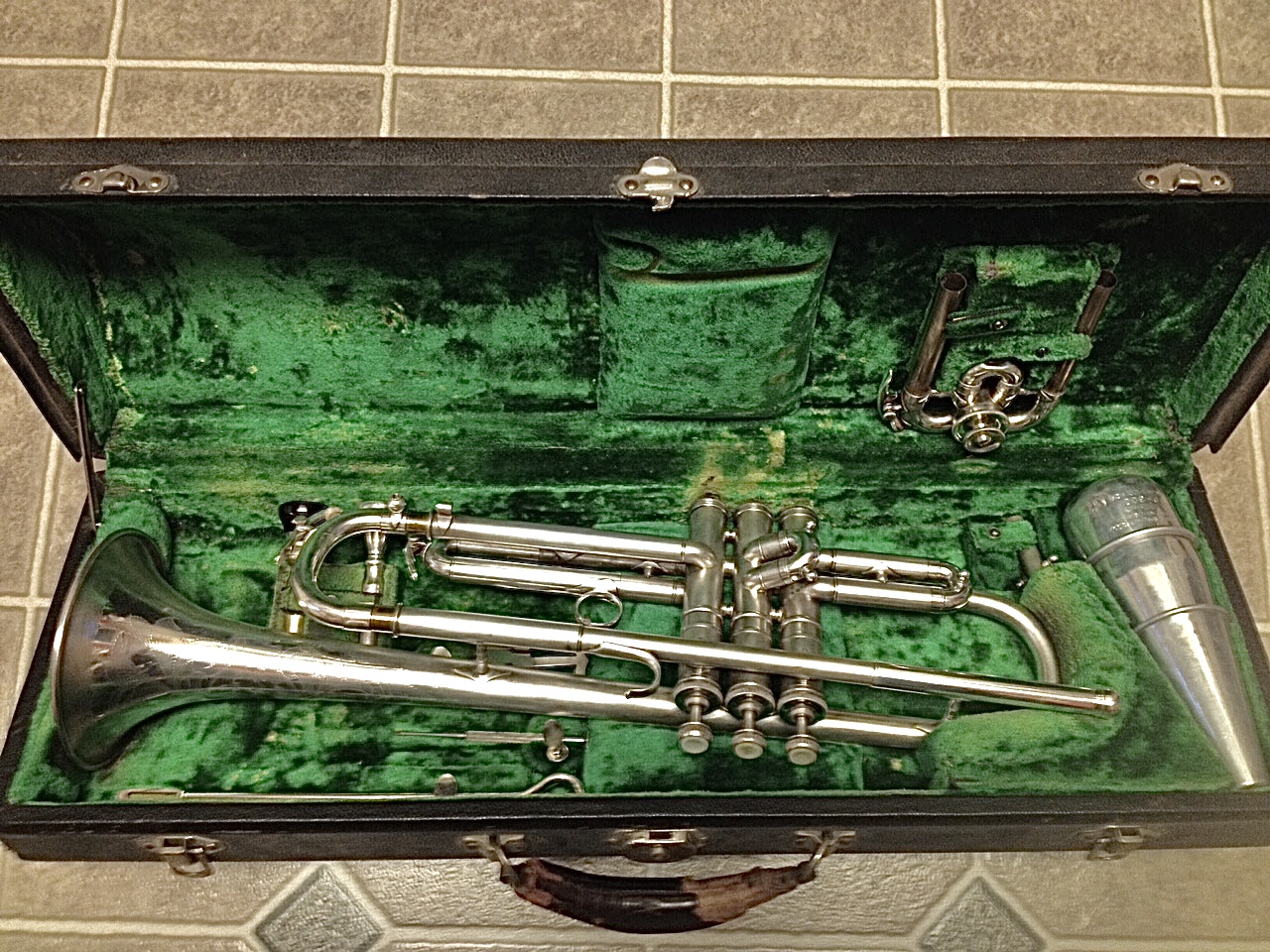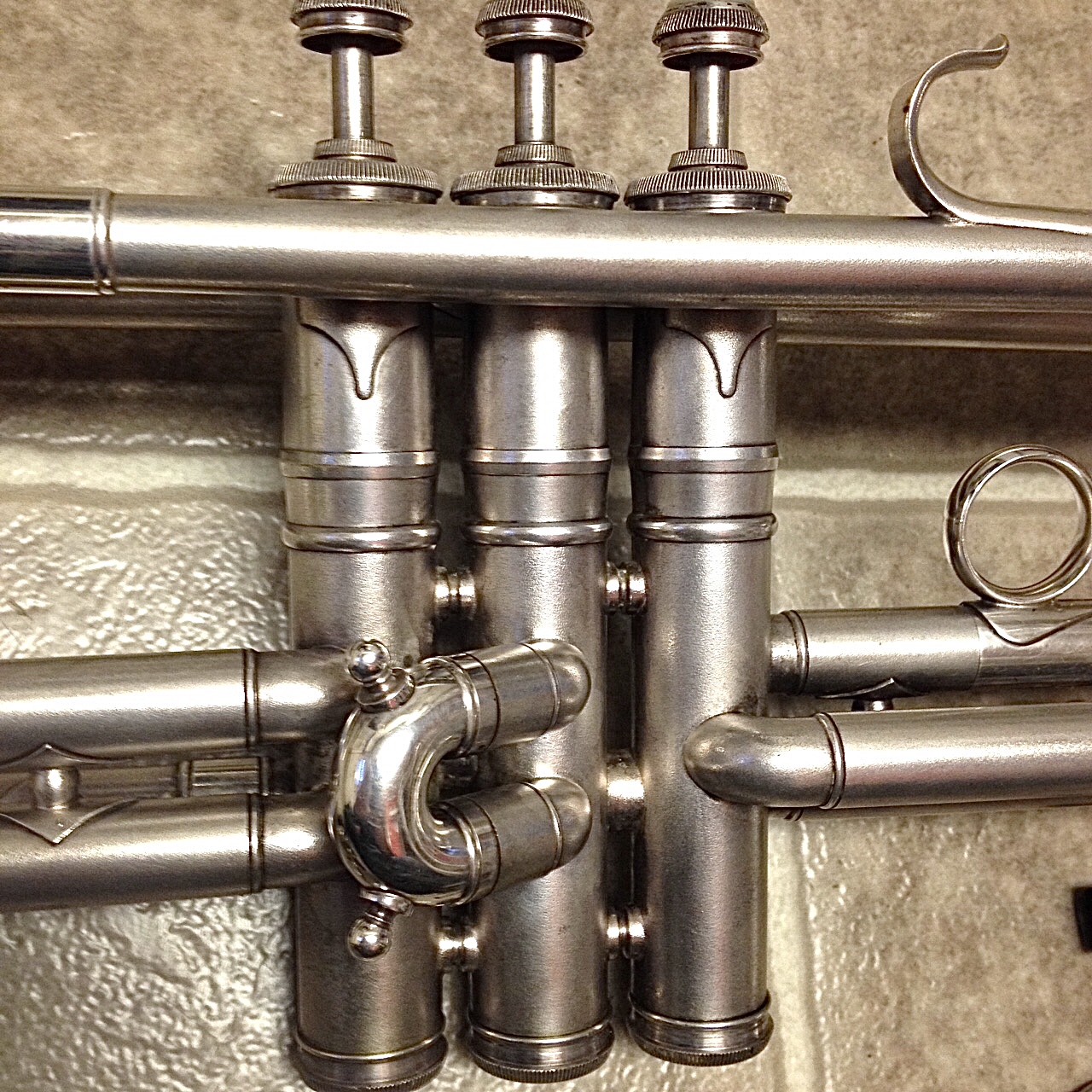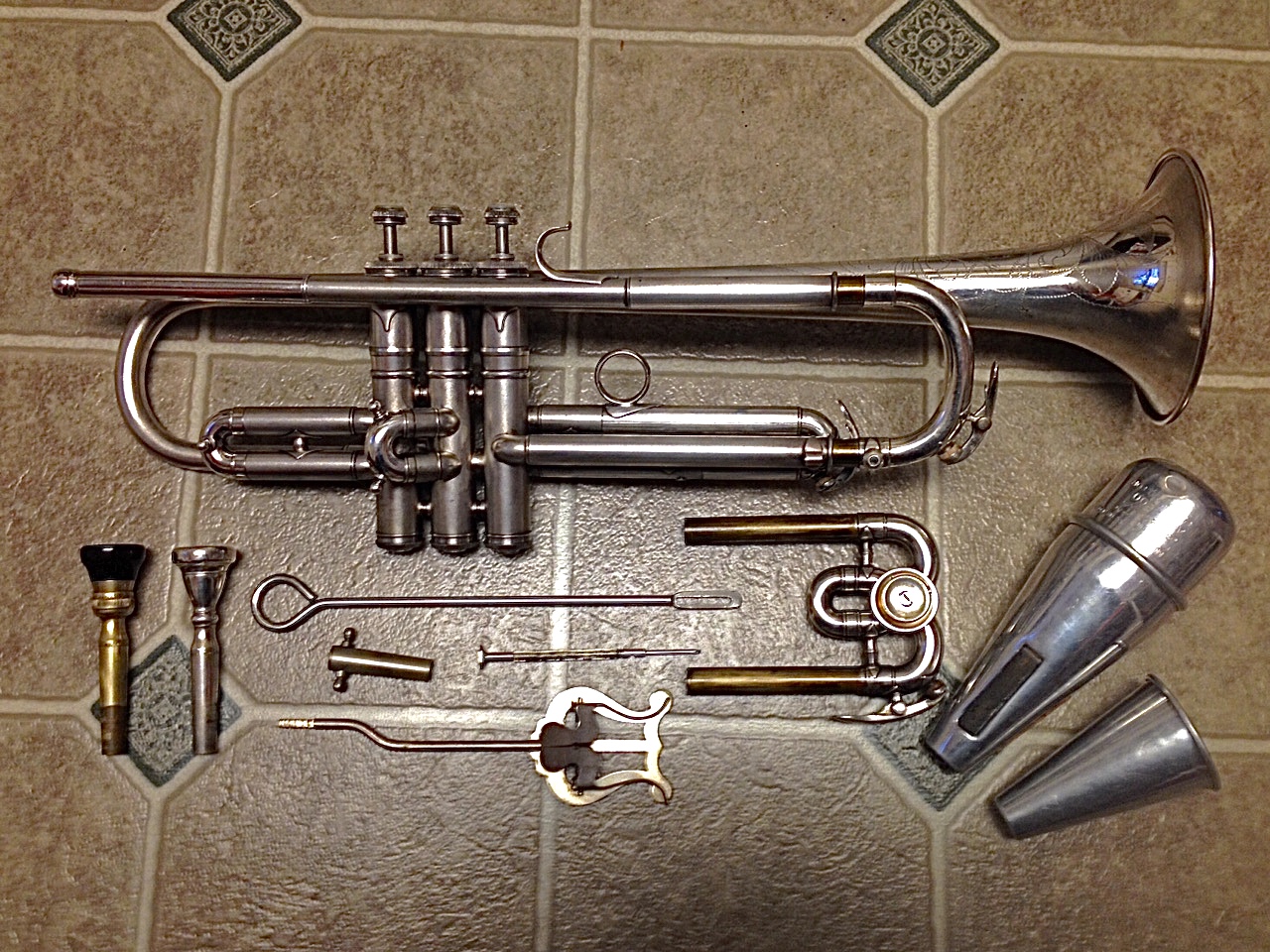What is this Conn? Should I purchase?
-
Conn trumpet Serial #256037 OBO http://www.ksl.com/classifieds/listing/59490078
-
Looks like a 22b, "early model". Looks a little banged up and leapipe looks crooked from the shown angle. If it plays good maybe make an offer.
-
Might be a 24B. Both 22B and 24B play well, this one looks like it needs work. I would try to get it for $100 or less, depending on how much is stuck or how much plating is left on the pistons.
-
I've got a 22B now...no wait, it's a 2B. They are rarer than 22B, correct? Anyway, $100 is a decent deal. I'm sure I could flip it and make a profit.
-
Bit cheap. Summerhays know what they are doing. I would not be surprised if it doesn't need a valve refit to play decently.
-
It might. I'll take it to them to see. Probably a good deal though.
-
My guess is also that it’s a 22B. There are other Conn trumpets from that era that look the same and have different bore sizes, but the 22B is far more common than the others. I’ve had 3 of them, two from the ‘20s like that one, and one from the ‘60s. The ‘25 was my favorite, but was really ugly. The ‘29 was very pretty, but didn’t play quite as well, and the ‘68 was raw brass and was a much brighter trumpet. If you’re interested in it, $100 isn’t too much of a risk to take.
-
Whatever model it is, to me it looks like a WW1 relic...

-
@GeorgeB said in What is this Conn? Should I purchase?:
Whatever model it is, to me it looks like a WW1 relic...

Here’s the nice one I recently sold. A 1929 model, sold it locally for $350. The buyer said he planned on offering me less, but after seeing It and playing it, he paid me the full price.




-
Wow, what a difference. That is a beauty.
-
The 22B Early is an exception among vintage horns. Almost none of the pre-50s horns are really usable in a serious modern context - these are the exception. And, they are abundant, thus affordable, and will reward a player who invests more than can be recouped in bringing them back to solid playing condition. That being said, once a leadpipe is mangled, its time to move on.
In 1911, Holton shook up the North American market by getting serious about an orchestral trumpet. Until then, chromatic trumpets had been a mix of half-serious attempts and in the last couple of years, instruments targeting dance hall applications. The only serious trumpets in the US came from France - specifically Besson. Almost a decade later, Holton was moving on to the next leading edge with the minimally braced, lighter, Revelations that would miss the serious market, but explode into the dance hall and emergent Jazz market with a new darker, smokier sound. Conn at that same time was restructuring under the new ownership of Carl Greenleaf (recovering from the fire that wiped them out and the parting of ways with William Gronert that actually did more damage to the bottom line than the fire as Conn was a terrible manager - and ultimately lost most of his money, his company and his marriage.) Greenleaf set out to introduce a new line of top end trumpets, with the 2B New World Symphony as the new flagship. By some quirk of fate, the 22B New York Symphony small bore trumpet out played the 2B and everything else on the market - and then outsold. Until Benge began resurrecting Bessons and a boutique maker named Bach caught hold in the 30s, Conn was the unrivaled leader in trumpets - due in no small part to the 22B.
-
Does the extra tuning slide lower the pitch, an by how much?
-
@Curlydoc said in What is this Conn? Should I purchase?:
Does the extra tuning slide lower the pitch, an by how much?
On the 22B, the tuning slide with the rotary valve places the horn in the key of A when the valve is turned one way, and in Bb when turned the other way.
-
@Dale-Proctor Wow